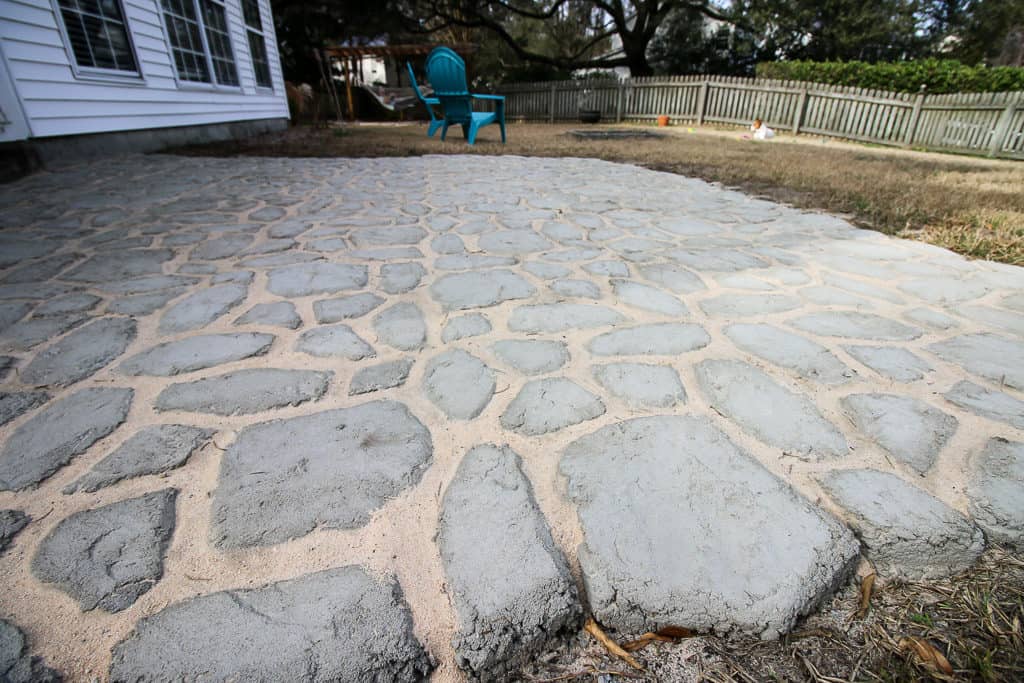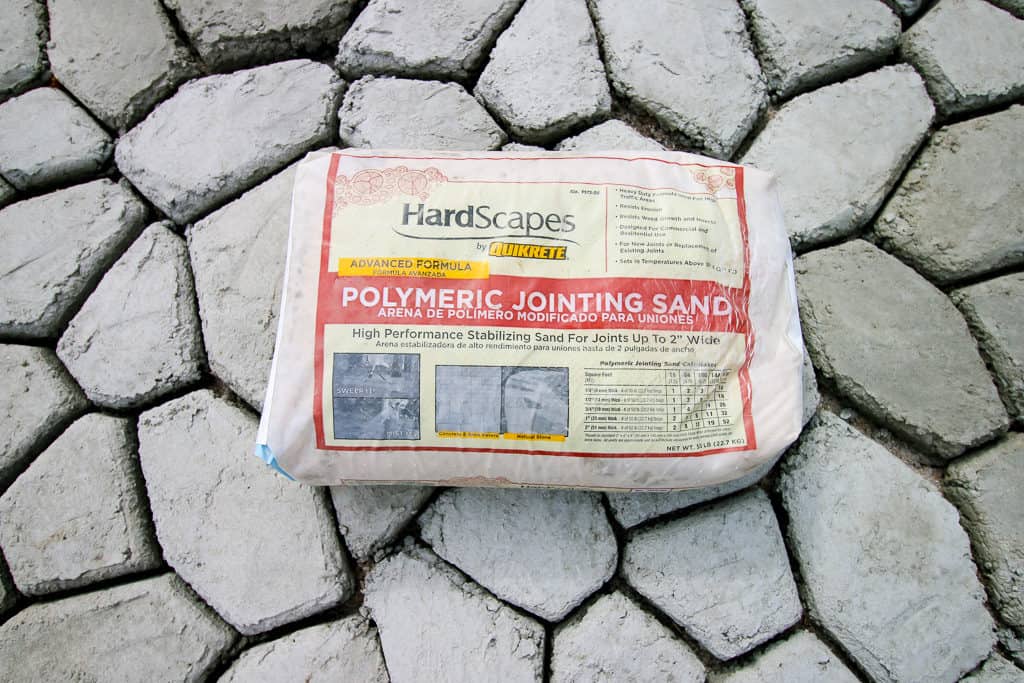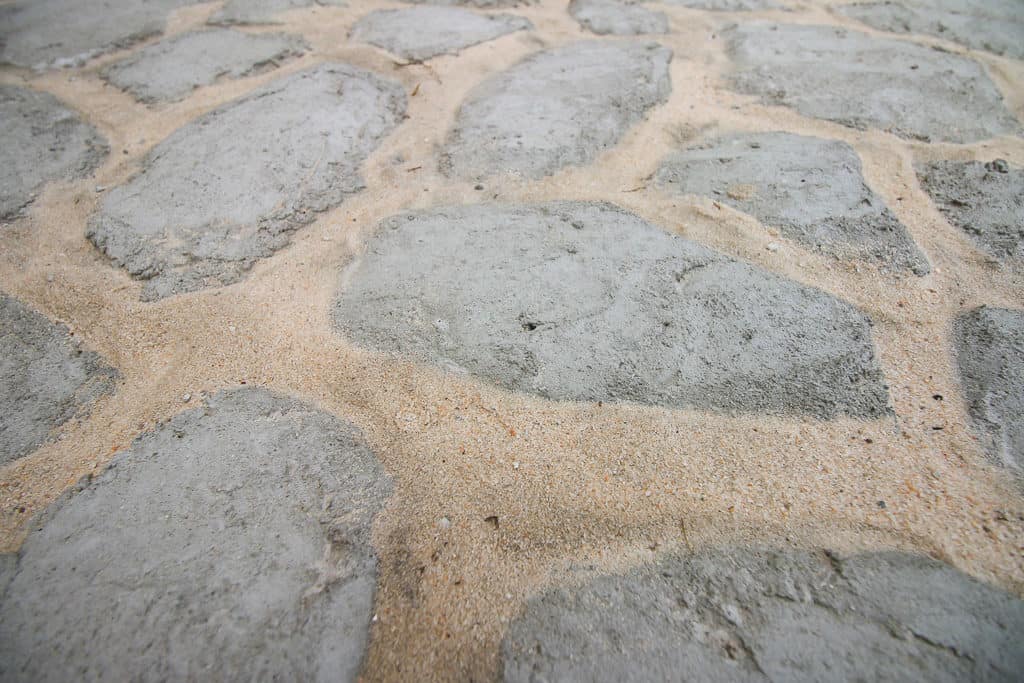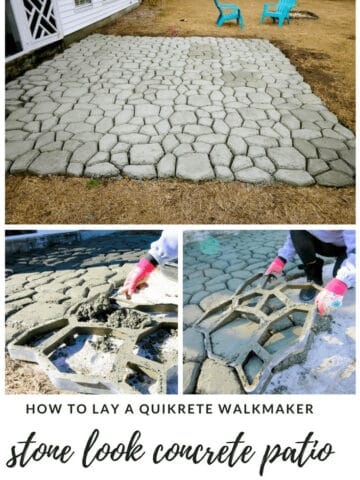Today we are back with the final step of our DIY patio - the jointing! After doing some research, we decided to add Quikrete Polymeric Jointing Sand in between our concrete pavers to give us the best long-term results for the patio.
The benefit of the polymeric sand is that it is firm but has some give to it.
If the ground shifts over time, this can slightly shift with it and your patio won't crack.
Knowing how to add polymeric sand to quikrete walkmaker pavers is the last step in your next patio or walkway project!
Click here to download this project tutorial in a free printable PDF

In case you missed it:
How we laid the Quikrete Walkmaker concrete patio
Don't forget to scroll down as we have a YouTube video of the whole process below!
How to add Polymeric Sand to Quikrete Walkmaker Pavers
What you need:
- Quikrete Polymeric Jointing Sand - via your home improvement store
- Broom
- Clean soft paintbrush
- Hose with spray nozzle

What you do:
- Once your patio is completely cured, pour the polymeric sand onto the pavers. You want to focus the sand on the joints, but it is okay at this point for it to be on the pavers.
Fill them as high/level as you want them to be. - Use a broom to sweep the sand off of the pavers and into the joints.
- You might want to go back with a dry clean paintbrush to fully brush the sand off of each stone.
Once it gets wet, it will harden in place, so take the time to get as much as possible into the joints. - Spray down your patio. We used the "shower" setting on the hose and then went back on the "flood" setting and flooded over each stone.
- We sprayed the patio down 4 times, about an hour apart each.
- Let the sand fully cure. It will become firm but still have some give to it.

We decided to make a video showing the entire process of laying the Quikrete Walkmaker patio and adding the polymeric jointing sand.
We are obsessed with our new patio and can't wait to get it furnished!
Looking for something?
We've been doing this since 2012 so we have a LOT of blog posts!
Search stuff like: Ceiling Projects | DIY Plant Stands | Thrift Flips


Hey there, I'm Sean, the woodworking enthusiast and builder behind CharlestonCrafted.com! Since 2012, I've been sharing the magic of turning raw materials into beautiful creations. I love teaching others the art and satisfaction of woodworking and DIY. I try to inspire fellow crafters to make something extraordinary out of nothing at all.




Lorian Bartle says
Looks good and I appreciate the close-up photos of the result. It looks like approximately 1" spacing between the paves, is that accurate?
Lorian Bartle
Morgan says
it varies depending on the spot, but that would be about the max!
Amy says
How many bags of sand did you need for this space?
Sean says
Hey Amy, we used about six bags of sand for this area. Thanks for stopping by!
Carlos says
Hi. I wonder how is it looking after almost 6 months? Have the stones moved?
Morgan says
No, they definitely have not moved! It looks fantastic!
Barb Myers says
So 6x7 rows of molds = 42 molds or 12x14 area. How much concrete? I am hoping to do 18 x 18 area plus fire pit surround.
Sean says
Hey Barb. You only need two molds really. 42 moldings, but only using 2 actual molds at a time. We found that we needed two bags of concrete for every three molds. So if you're hoping to do an 18x18 area, that would be 9x9 rows of molds, so you would probably need around 54 bags for that.
CarmenMero says
Where did you purchase the sand? I could not find it on Home Depot or Lowe’s websites.
Love the project. Im considering doing this for a portion of my milk cow barn. Do you think the stones will shift under cow traffic?
Sean says
Hi! We purchased at Lowe's. You're right, I'm not sure why it isn't online at either store. I'm heading to Lowe's this afternoon and will take a look. It was definitely there last year in stores!
Bev says
Thanks for passing along the grout cement Info. How do you tint the mold since I prefer a more natural color than gray cement color.
Sean says
Hi Bev! I have never died concrete myself. But, Quikrete makes a dye you can add to the mix as you are mixing it up. I would try that!
Ian says
How much polymeric sand did you end up using? We have a
14' x 20' patio we are doing right now with the same country stone walkmaker forms and are unsure how much of the sand we'll need because the gaps are so wide. Thanks.
Morgan says
We used 6 bags of polymeric sand for a 14x14' patio. I would over buy and return so you can not run out halfway thru!